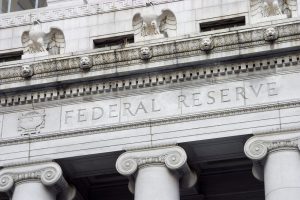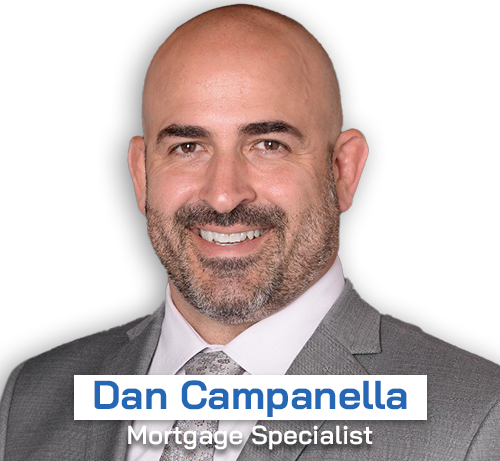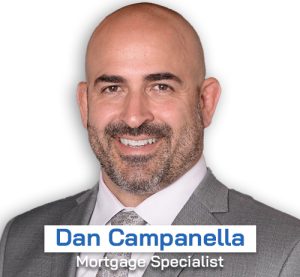
The Role of the Federal Reserve
The Federal Reserve, often referred to as the Fed, is the central banking system of the United States. Its primary mandate is to maintain stable prices and promote maximum employment. To achieve these objectives, the Fed uses monetary policy tools, including the adjustment of the federal funds rate. The federal funds rate is the interest rate at which depository institutions lend funds to each other overnight.
When the economy is growing rapidly, the Fed may increase the federal funds rate to prevent excessive inflation. Conversely, during periods of economic downturn, the Fed may lower the federal funds rate to stimulate borrowing and spending. While the Fed’s actions directly impact short-term interest rates, they indirectly influence mortgage rates as well.
The Link Between the Federal Funds Rate and Mortgage Rates
Mortgage rates are influenced by the broader interest rate environment, which includes the federal funds rate. However, it’s important to note that the Federal Reserve does not set mortgage rates directly. Instead, mortgage rates are primarily determined by market forces such as supply and demand dynamics, investor sentiment, and economic conditions. Nevertheless, the federal funds rate acts as a benchmark that affects the overall interest rate environment.
When the Federal Reserve raises the federal funds rate, it becomes more expensive for banks and lenders to borrow money. This increase in borrowing costs can lead to higher interest rates across various loan products, including mortgages. Conversely, when the Fed lowers the federal funds rate, it can lead to lower borrowing costs for lenders, which may result in lower mortgage rates for borrowers.
Factors That Influence Your Mortgage Rate
While the actions of the Federal Reserve play a significant role in shaping mortgage rates, there are several other factors that influence the rate you’ll be offered. These factors include:
Credit Scores
Your credit score is a crucial determinant of the interest rate you’ll receive on your mortgage. Lenders use credit scores to assess your creditworthiness and determine the level of risk associated with lending to you. Generally, borrowers with higher credit scores are considered less risky and are therefore offered lower interest rates. On the other hand, borrowers with lower credit scores may face higher interest rates or have difficulty qualifying for a mortgage altogether.
To improve your credit score and increase your chances of securing a favorable mortgage rate, it’s essential to maintain a good payment history, keep your credit utilization low, and avoid applying for new credit accounts unnecessarily. Regularly monitoring your credit report for errors and addressing any inaccuracies can also help improve your credit score.
Home Location
The location of the property you’re purchasing can also influence the mortgage rate you’re offered. Lenders may offer slightly different interest rates depending on the state and county where the property is located. Additionally, if you’re buying a home in a rural area, you may find that different lenders have varying rates and loan products available. It’s important to shop around and compare offers from multiple lenders, including local lenders, to ensure you’re getting the best rate for your specific location.
Home Price and Loan Amount
The price of the home you intend to purchase and the loan amount you require also impact your mortgage rate. Generally, larger loan amounts or particularly small loan amounts can result in higher interest rates. Lenders may charge higher rates for smaller loan amounts due to the perceived higher risk associated with these loans. On the other hand, larger loan amounts may come with higher rates as well, as they may be considered more substantial financial commitments.
To determine the loan amount you’ll need, you should consider the price of the home, closing costs, and your down payment. The down payment plays a significant role in mortgage rates, as we’ll discuss in the next section.
Down Payment
The down payment is the initial amount of money you contribute towards the purchase of a home. A larger down payment typically results in a lower mortgage rate, as it demonstrates a higher level of commitment and reduces the lender’s risk. Lenders often view borrowers with larger down payments as more financially stable and less likely to default on their loans.
If you can afford it, aiming for a down payment of 20% or more is advisable, as it may help you secure a lower interest rate and avoid the need for private mortgage insurance (PMI). However, many first-time homebuyers may find it challenging to save for a large down payment. In such cases, government-backed loans, such as VA loans, USDA loans, and FHA loans, offer options with lower down payment requirements. It’s crucial to weigh the benefits and costs of different down payment amounts and loan types to find the best fit for your financial situation.
Loan Term
The term, or duration, of your mortgage loan also affects the interest rate you’ll be offered. In general, shorter-term loans, such as 15-year mortgages, have lower interest rates compared to longer-term loans, such as 30-year mortgages. Shorter-term loans typically come with higher monthly payments but result in lower overall interest costs over the life of the loan.
On the other hand, longer-term loans offer lower monthly payments but result in higher overall interest costs due to the extended repayment period. Deciding on the loan term that best suits your financial goals and budget is an essential consideration when choosing a mortgage.
Interest Rate Type
Mortgage loans come with two primary types of interest rates: fixed and adjustable. Fixed interest rates remain constant throughout the life of the loan, providing predictable monthly payments. Adjustable interest rates, on the other hand, may start with a fixed rate for an initial period, then adjust periodically based on market conditions.
When choosing between fixed and adjustable rates, it’s essential to consider your financial situation, risk tolerance, and long-term plans for the property. Fixed rates provide stability but may come with slightly higher initial rates compared to adjustable rates. Adjustable rates may offer lower initial rates but come with the potential for rate increases in the future. Assessing your needs and consulting with a mortgage professional can help you determine which interest rate type is best suited for your circumstances.
Loan Type
There are various types of mortgage loans available to borrowers, including conventional loans, FHA loans, USDA loans, and VA loans. Each loan type has its own eligibility requirements and may come with different interest rates. For example, FHA loans are insured by the Federal Housing Administration and often have more lenient credit and down payment requirements than conventional loans.
When choosing a loan type, it’s crucial to understand the specific terms, eligibility criteria, and associated costs. Shopping around and comparing offers from different lenders can help you find the loan type that best aligns with your needs and financial situation.
The Trade-Off Between Points and Interest Rates
In addition to the factors mentioned above, borrowers may also encounter the option to pay points or receive lender credits, which can impact their mortgage rate. Points, also known as discount points, allow borrowers to pay an upfront fee in exchange for a lower interest rate. Paying points can be advantageous for borrowers who plan to keep their mortgage for an extended period. On the other hand, lender credits can help lower closing costs but may result in a slightly higher interest rate.
When considering points and lender credits, it’s essential to evaluate your long-term plans, financial goals, and the overall cost of the loan. Analyzing the trade-off between upfront costs and long-term savings can help you make an informed decision that aligns with your financial objectives.
While the Federal Reserve’s actions indirectly impact mortgage rates, they are just one piece of the puzzle. Various factors, such as credit scores, home location, loan amount, down payment, loan term, interest rate type, and loan type, interact to determine the interest rate you’ll be offered. By understanding these factors and carefully evaluating your options, you can make informed decisions when it comes to your mortgage. Remember to shop around, compare offers from multiple lenders, and consider seeking guidance from mortgage professionals to find the best mortgage rate for your unique situation.
Contact Dan (954-336-1922) for a free consultation!
—
 About Dan Campanella – Mortgage Specialist
About Dan Campanella – Mortgage Specialist
Dan provides clients with years of proven experience and an abundance of financing options for their mortgages. His common sense approach and devotion to customer service is what sets him apart in the highly competitive mortgage industry. Dan prides himself on consistently delivering “referable services” to his clients, referral sources, and partners.

